How Many Does It Take?
 In the 2010 season, the NFL
recorded a number of 218 concussions among all of the players. This total is
the highest the league has seen for years. A concussion occurs when your head
receives a severe blow strong enough to shake your brain and hit the inside of
your skull causing brain damage. When someone experiences a concussion,
immediate physical symptoms include dizziness, confusion, headaches, and nausea
but the long term symptoms are the most important. Memory loss, sleep
disturbance, and smell and taste disorders are all long term symptoms after
receiving a concussive traumatic brain injury. After receiving your first
concussion, you are more prone to a second one which will include a longer
recovery period than the initial one. After
someone experiences multiple concussions, second impact syndrome may occur
which typically goes hand in hand with death of severe brain damage. So, for
football players, receiving a concussion isn’t just an injury that sidelines
them for a week, but a prolonged worry of recurrence and further damage.
In the 2010 season, the NFL
recorded a number of 218 concussions among all of the players. This total is
the highest the league has seen for years. A concussion occurs when your head
receives a severe blow strong enough to shake your brain and hit the inside of
your skull causing brain damage. When someone experiences a concussion,
immediate physical symptoms include dizziness, confusion, headaches, and nausea
but the long term symptoms are the most important. Memory loss, sleep
disturbance, and smell and taste disorders are all long term symptoms after
receiving a concussive traumatic brain injury. After receiving your first
concussion, you are more prone to a second one which will include a longer
recovery period than the initial one. After
someone experiences multiple concussions, second impact syndrome may occur
which typically goes hand in hand with death of severe brain damage. So, for
football players, receiving a concussion isn’t just an injury that sidelines
them for a week, but a prolonged worry of recurrence and further damage.
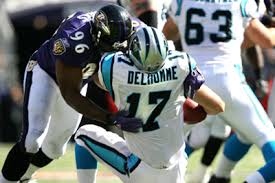 For the 2011 season, the NFL took action by making rule changes such as the kick-off rule in order to
reduce concussion inflicting plays. They have moved the kick-off position from
the 30 yard-line to the 35 yard-line which reduced the amount of kick-off
returns which is the most dangerous play in football. Along with this rule
change, the NFL has talked about removing the kick-off all together and also
other rule changes that could take place all in the interest of player safety.
But are these rule changes doing enough to ensure the safety and well being of
the players?
For the 2011 season, the NFL took action by making rule changes such as the kick-off rule in order to
reduce concussion inflicting plays. They have moved the kick-off position from
the 30 yard-line to the 35 yard-line which reduced the amount of kick-off
returns which is the most dangerous play in football. Along with this rule
change, the NFL has talked about removing the kick-off all together and also
other rule changes that could take place all in the interest of player safety.
But are these rule changes doing enough to ensure the safety and well being of
the players?
Concussions
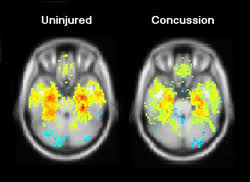 A concussion occurs when your head receives a
severe blow strong enough to shake your brain and hit the inside of your skull
causing brain damage. When someone experiences a concussion, immediate physical
symptoms include dizziness, confusion, headaches, and nausea but the long term
symptoms are the most important. Memory loss, sleep disturbance, and smell and
taste disorders are all long term symptoms after receiving a concussive
traumatic brain injury. After receiving your first concussion, you are more
prone to a second one which will include a longer recovery period than the initial one. After someone
experiences multiple concussions, second impact syndrome may occur which
typically goes hand in hand with death of severe brain damage.
A concussion occurs when your head receives a
severe blow strong enough to shake your brain and hit the inside of your skull
causing brain damage. When someone experiences a concussion, immediate physical
symptoms include dizziness, confusion, headaches, and nausea but the long term
symptoms are the most important. Memory loss, sleep disturbance, and smell and
taste disorders are all long term symptoms after receiving a concussive
traumatic brain injury. After receiving your first concussion, you are more
prone to a second one which will include a longer recovery period than the initial one. After someone
experiences multiple concussions, second impact syndrome may occur which
typically goes hand in hand with death of severe brain damage.
What's Being Done?

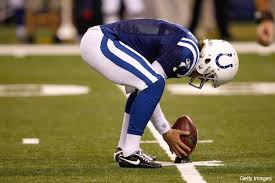 The
NFL has made rules to help regulate serious and further damage after a player
has received a concussion or has shown concussion like symptoms. The NFL did a study that shows that NFL players ages 30 to 49 are 19 times more likely
to suffer from Alzheimer’s or any memory related disease opposed to the
national rate for the same age group (Buccalo, 2012, p.1) . So now, after a
major blow to the head, a player must be cleared by appropriate medical
personnel before returning to action (Buccalo, 2012, p.1). During the 2011
season, independent trainers were added to the sidelines of games to test
players who receive blows to the head. Trainers in the press box review plays
that they consider to be possible concussion causing plays and depending on
what they see, the trainers can tell the sideline trainers to test the certain
player. This rule was made to prevent players from reentering a game after
receiving a possible concussion and causing further damage. The rule change
that had the biggest impact on player safety was changing the kick-off.
Originally, the kick-off took place at the 30 yard-line. In 2010, there were a
total of 2,033 kick-off returns in the NFL. In 2011, there were only 1,375
kick-off returns, a 40% decrease, after moving the kick-off forward five yards
(Mihoces, 2012, p. 1). Along with this, the total number of on all
plays decreased by 12.5% from 2010 to 2011. The kick-off is known as the most
dangerous play in football in which 22 players, 11 from each team, run at full
speed toward each other with one goal: to take out the others. The NFL has
thought about removing this play all together but until a proper replacement is
decided, that will not happen. Also, the NFL has made rules to protect a
defenseless player (a player who is making a play and is unable to protect
himself) and is looking into adding more rules to protect players who are in
the act of making a play (Smith, 2011, p.1). Also, they are trying to remove
the crack-back block which is when an outside receiver comes down to block an inside
defender who is unable to see the block coming (Van Bibber, 2012, p.1). Rules
like these are being enforced to further ensure the safety of players in the
NFL.
The
NFL has made rules to help regulate serious and further damage after a player
has received a concussion or has shown concussion like symptoms. The NFL did a study that shows that NFL players ages 30 to 49 are 19 times more likely
to suffer from Alzheimer’s or any memory related disease opposed to the
national rate for the same age group (Buccalo, 2012, p.1) . So now, after a
major blow to the head, a player must be cleared by appropriate medical
personnel before returning to action (Buccalo, 2012, p.1). During the 2011
season, independent trainers were added to the sidelines of games to test
players who receive blows to the head. Trainers in the press box review plays
that they consider to be possible concussion causing plays and depending on
what they see, the trainers can tell the sideline trainers to test the certain
player. This rule was made to prevent players from reentering a game after
receiving a possible concussion and causing further damage. The rule change
that had the biggest impact on player safety was changing the kick-off.
Originally, the kick-off took place at the 30 yard-line. In 2010, there were a
total of 2,033 kick-off returns in the NFL. In 2011, there were only 1,375
kick-off returns, a 40% decrease, after moving the kick-off forward five yards
(Mihoces, 2012, p. 1). Along with this, the total number of on all
plays decreased by 12.5% from 2010 to 2011. The kick-off is known as the most
dangerous play in football in which 22 players, 11 from each team, run at full
speed toward each other with one goal: to take out the others. The NFL has
thought about removing this play all together but until a proper replacement is
decided, that will not happen. Also, the NFL has made rules to protect a
defenseless player (a player who is making a play and is unable to protect
himself) and is looking into adding more rules to protect players who are in
the act of making a play (Smith, 2011, p.1). Also, they are trying to remove
the crack-back block which is when an outside receiver comes down to block an inside
defender who is unable to see the block coming (Van Bibber, 2012, p.1). Rules
like these are being enforced to further ensure the safety of players in the
NFL.
Future Plans
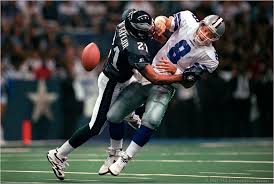
The League Office and Competition Committee, whose top priority is to esure the safety of the players, have spoke of many further rule changes that may take place. Talk of adding to the description of what makes a "defenseless" player has been a popular topic and is up for debate among the NFL's counsils. From what started as only being a receiver is being moved to quarterbacks, kickers, punters, or any player in the act of making a play. Also, the rule of a play being blown dead if a runner's helmet comes off has been added along with not being able to hit a runner whose progress has stopped. Another major change is the addition of independent sideline trainers to all team's sidelines during games. There is also trainers in the press box who call down to the field after reviewing a play and determining whether the player hit on the previous play needs to be tested for concussion symtoms before experiencing further action. These trainers have the power to hold a player out of action as long as they feel is necessary without conflict from coaches or team staff. But the most impacting rule change was the kick-off rule. The kick-off has already been moved up five yards to the 35 yard-line but the possibility of removing the play all together has sparked interest among the league. The kick-off is known as the most dangerous play in football having 22 players, 11 from each team, running directly towards each other at high speed in effort to take out the opposing player. The NFL wont remove the kick-off until they find the right plan for something to replace it (Smith, 2012).
Conclusion
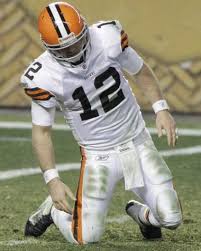
After all the rule changes that have taken place, a big step in player safety has been taken. The decrease in concussion totals on all plays by 12.5% (Mihoces, 2012) is a great start but there needs to be further action. Concussions are not just a week long problem that hold a player out of action for a short period of time but a life long threat. With the risk of dementia, Alzheimer's, and Parkinson's disease, concussions are nothing to be taken lightly. If there are steps that can be taken to reduce and prevent these sort of injuries, then by all means, those steps need to be taken. If the League Office and Competition Committee's top priority is truly to ensure the safety of the NFL's playeres, then there should be no hesitation.